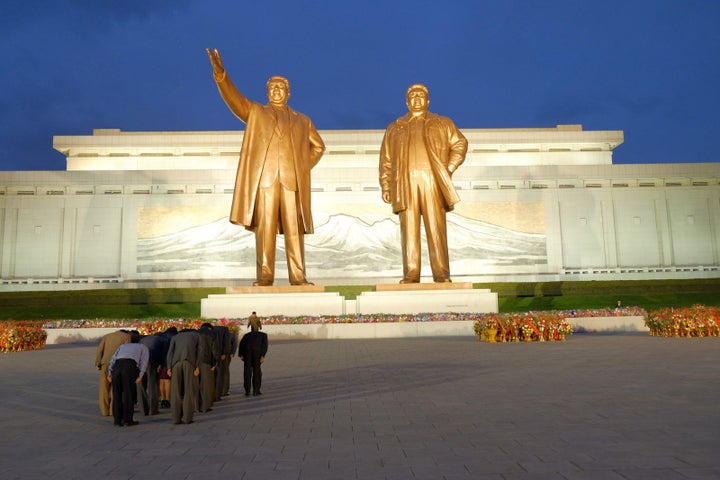
North Koreans pay their respects at the Mansudae Grand monument in Pyongyang.
Fabian Muir
Fabian Muir is an Australian photographer whose documentary work aims to develop humanistic narratives in otherwise politically isolated regions of the world. After years documenting places like the former Soviet Union, Iran, and Cuba, his next series focuses on a country that epitomizes the phrase “hermit kingdom”: North Korea.
Since 2015, Fabian Muir has traveled to the isolated nation of North Korea five times to capture a side of life that many Americans may be surprised to see as nonconfrontational and somewhat relatable.
Here, Muir shares with BuzzFeed News the story of his journey and his thoughts on the pictures he walked away with:
The series began with many of the same expectations that anyone would have before going there — bleak cityscapes, expressionless people, soldiers everywhere. It’s difficult not to have such preconceptions since the dominant visual narrative pushes these tropes. I had hardly ever seen an image of a smiling North Korean before visiting.
So to start, I was also looking for things to confirm these expectations, no doubt exacerbated by the fact that my first visit took place in winter, which is excruciatingly cold there. After several days, however, various unexpected layers began revealing themselves, not least the way in which I observed North Koreans interacting among themselves and the fact that they can actually be very warm.
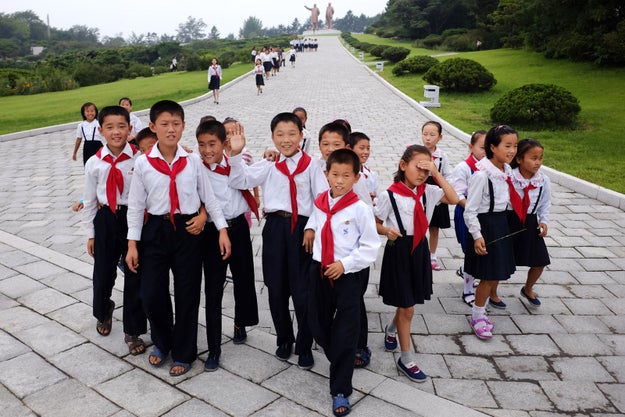
Schoolchildren make their way from the leaders' statues in central Hamhung.
Fabian Muir
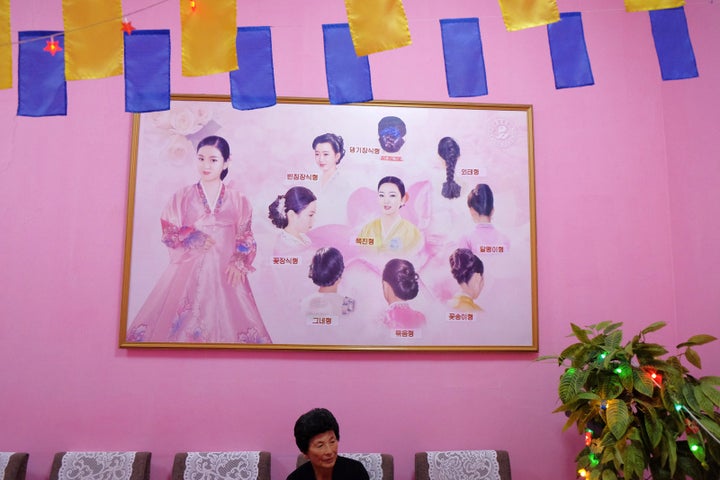
Traditional female Korean haircuts and a customer at a Pyongyang hair salon.
Fabian Muir
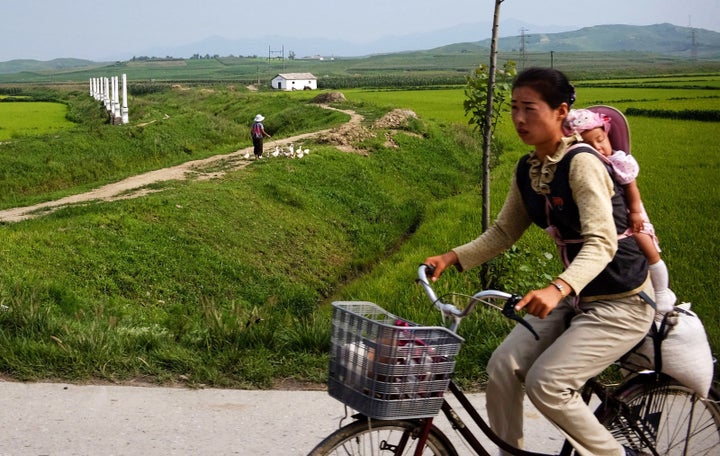
A cyclist rides through rural North Korea.
Fabian Muir
With repeated visits the project became increasingly personal as I realized how limited most people’s understanding is of the country, making me feel a kind of obligation to tell the story. I’m not talking about the understanding of the political dimension, but rather of ordinary North Koreans in day-to-day contexts.
It’s estimated that up to 200,000 people are incarcerated in North Korea’s prisons, which are constantly in the media spotlight, but what about the other 25 million there, who are leading “normal” lives? These are the people I wanted to discover: What is a normal life in North Korea? How do they relax? What does family life look like? What do they read? What music do they like? What do they know about the outside world? How do they operate within their political framework? How do they respond to foreigners? What are the similarities and differences between us and them?
There are so many questions in this vein, and the fact that the answers at times ran counter to popular assumptions meant that the work initially hit brick walls in some quarters. At times, people were unwilling to entertain the notion of a “human” North Korean and instead suspected I had fallen for elaborate setups or that the North Koreans had stage-managed my photography. Occasionally things are indeed set up, but this is rather rare and very obvious when it does occur.
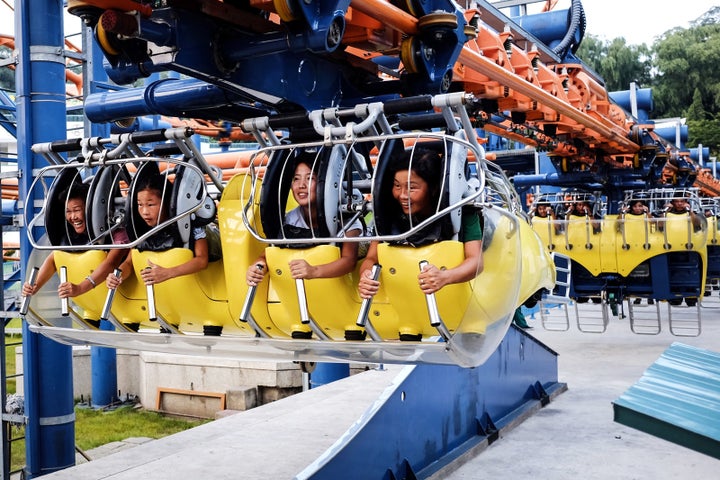
Nervous anticipation as locals prepare for the launch of a ride in Kaeson Youth Park in Pyongyang.
Fabian Muir
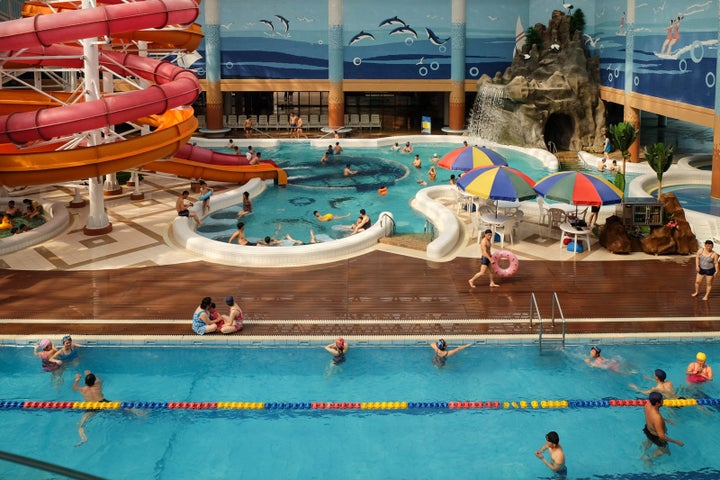
Munsu Water Park in Pyongyang.
Fabian Muir
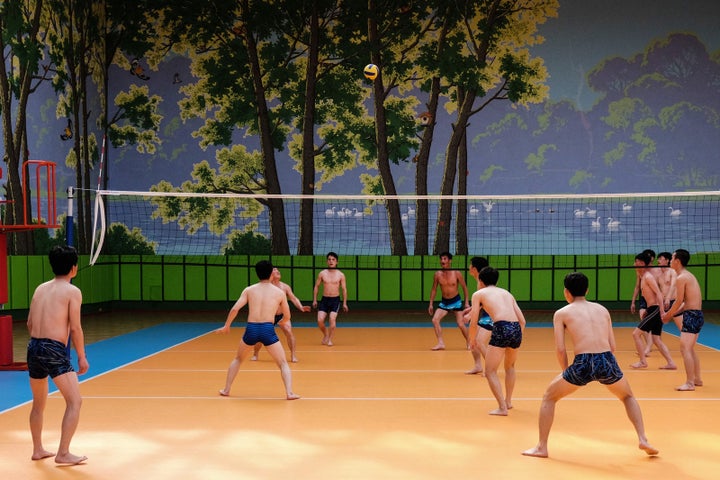
Pyongyangites play volleyball at Munsu Water Park in Pyongyang.
Fabian Muir
It’s important to mention that any foreigner who goes to North Korea is assigned at least two guides/minders, who will almost always accompany you whenever you leave your hotel. They are trained as guides, usually charming, and do provide a lot of information, but part of their role is also to control your movements. This means that by definition there are significant constraints, so the possibility of an absolutely definitive survey of North Korea does not currently exist, even though one can indeed travel through large parts of the country and photograph quite freely.
This doesn’t mean there was someone on my shoulder every time I took a picture, but they were rarely more than 50 meters away other than the relatively few occasions when I was allowed to roam free for an hour or two. That said, my own experience was that the guides are also in a position to facilitate a great deal if you simply treat them normally, and I was frequently surprised by the access I was given considering the circumstances.
They generally offer frank responses to questions. It’s clearly not the ideal arrangement, but if one tries to understand their own sensitivities and thinks of them as fixers it’s possible to work quite effectively even within these parameters. As mentioned earlier, I’ve not experienced intervention in my photography there, nor did they ever try to prevent me from interacting with locals.
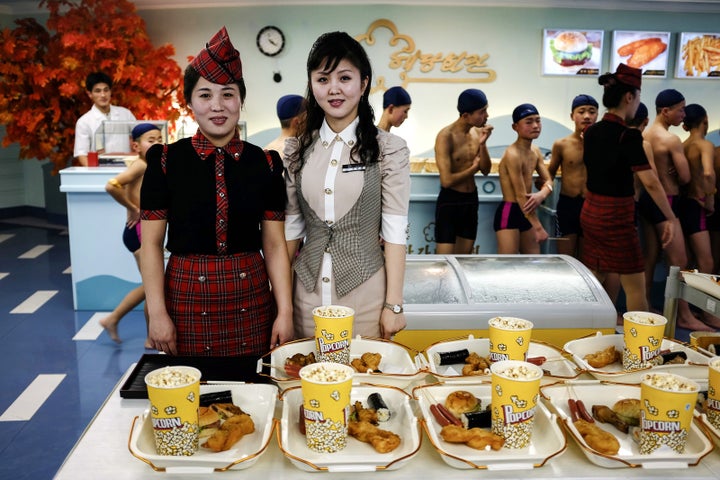
North Korean fast food and US '50s outfits in Munsu Water Park in Pyongyang.
Fabian Muir

Locals enjoy a picnic on Moran Hill in Pyongyang.
Fabian Muir
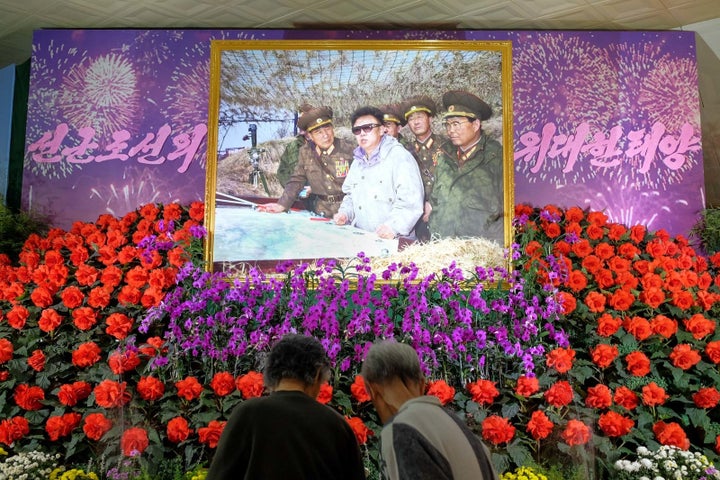
Locals admire Kimjongilia (red) and Kimilsungia (purple) flowers at a flower festival in Pyongyang.
Fabian Muir
It has occurred to me that perhaps some people feel certain images are contrived because their composition makes them feel like tableaux. Such skepticism riles me since it’s difficult not to take it personally when an individual who has never even visited North Korea believes they know more on the topic than someone who has completed a two-year project and studied every text available. So it certainly became a personal mission on two levels: first to supplement the established narrative through a balanced survey of ordinary North Koreans and, as it turned out, lending them a dignity that has previously been lacking; and second, the task of convincing armchair skeptics that the images are truly candid.
The image of people laughing at a picnic is important to me since it is the last thing most viewers might expect to see in a body of work on North Korea. I've occasionally been challenged on this photo by people thinking it was staged, yet it was a completely spontaneous moment. Since it was a national holiday, there must have been thousands of picnickers in the park, and this particular group were laughing when a man in a neighboring gathering, who had evidently had one soju too many, stood up and began swaying in the breeze while singing painfully out of tune.
North Koreans never interfered with my image-making, deleted photos, or instructed me on what to shoot. The conviction that the whole thing is a huge Truman Show for visitors can take on extremes — for example many Westerners genuinely believe that the Pyongyang Metro only actually runs when a foreigner is on it!

Students participate in a mass dance on Kim Il-sung Square in Pyongyang.
Fabian Muir

A newlywed couple outside Pyongyang Folklore Park.
Fabian Muir
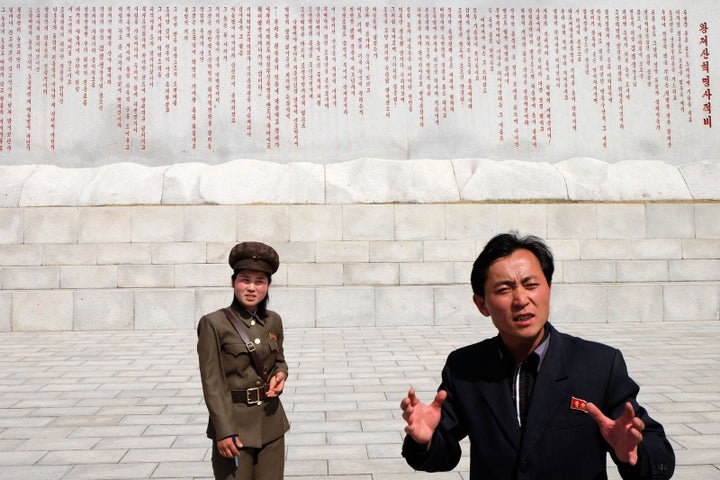
A guide translates a female soldier's comments about the Wangjaesan Monument in North Hamgyong province.
Fabian Muir
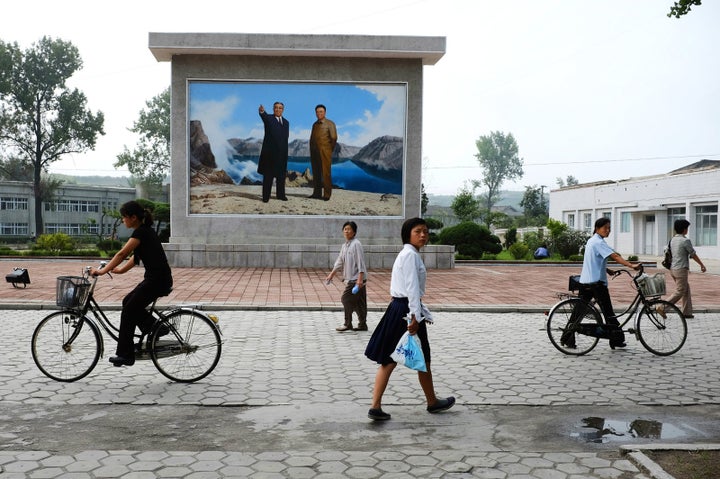
People in provincial North Korea pass before a mural of the leaders standing upon the North Korean “sacred mountain” of Mount Paektu.
Fabian Muir
As mentioned, it was my experience of North Koreans as thoughtful, kind, and humorous people, in many ways not different from us, that I found most illuminating. Children are cheeky and fun. Obviously the people are indoctrinated, but the automatic conclusion that they have all been completely desensitized to become unthinking cogs in the state apparatus is an exceedingly simplistic analysis and typical of the kind of assumption one makes without having been there — I had made it too.
I hope that the images open up unexpected perspectives on the country and particularly its people, and help viewers to attach a different face to North Korea from the bombastic version the state tends to project on the world stage.
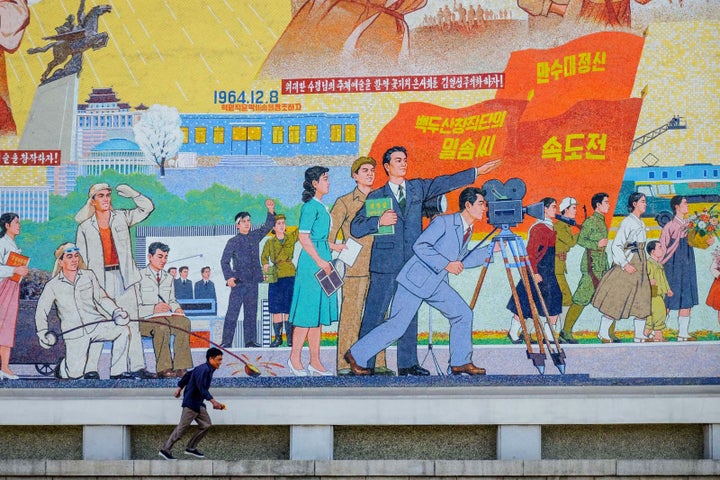
A man runs past monumental mosaics at Pyongyang film studios.
Fabian Muir
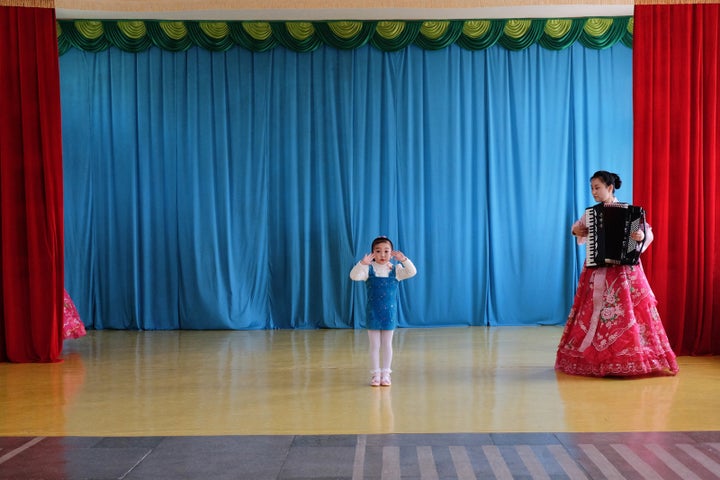
A child sings at a kindergarten performance in Chongjin, North Korea. Talented children are trained to a very high level from an early age.
Fabian Muir
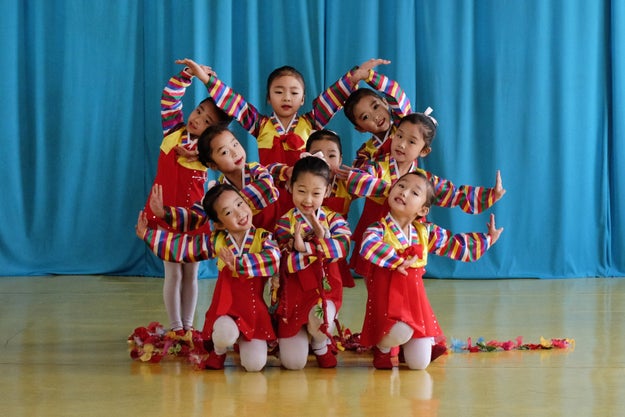
Young girls perform at a kindergarten in Chongjin.
Fabian Muir
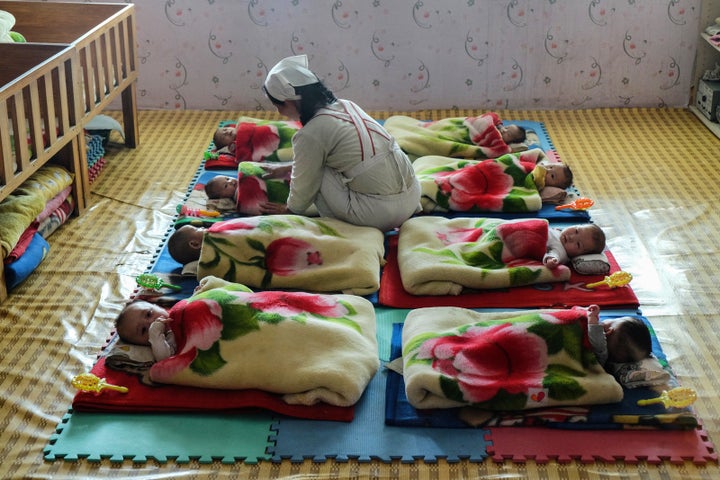
A nurse tends infants in an orphanage in Nampo.
Fabian Muir
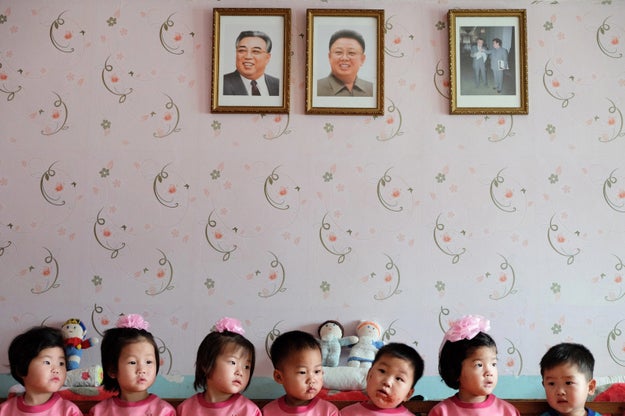
Children line up in an orphanage in Nampo on North Korea's west coast.
Fabian Muir




